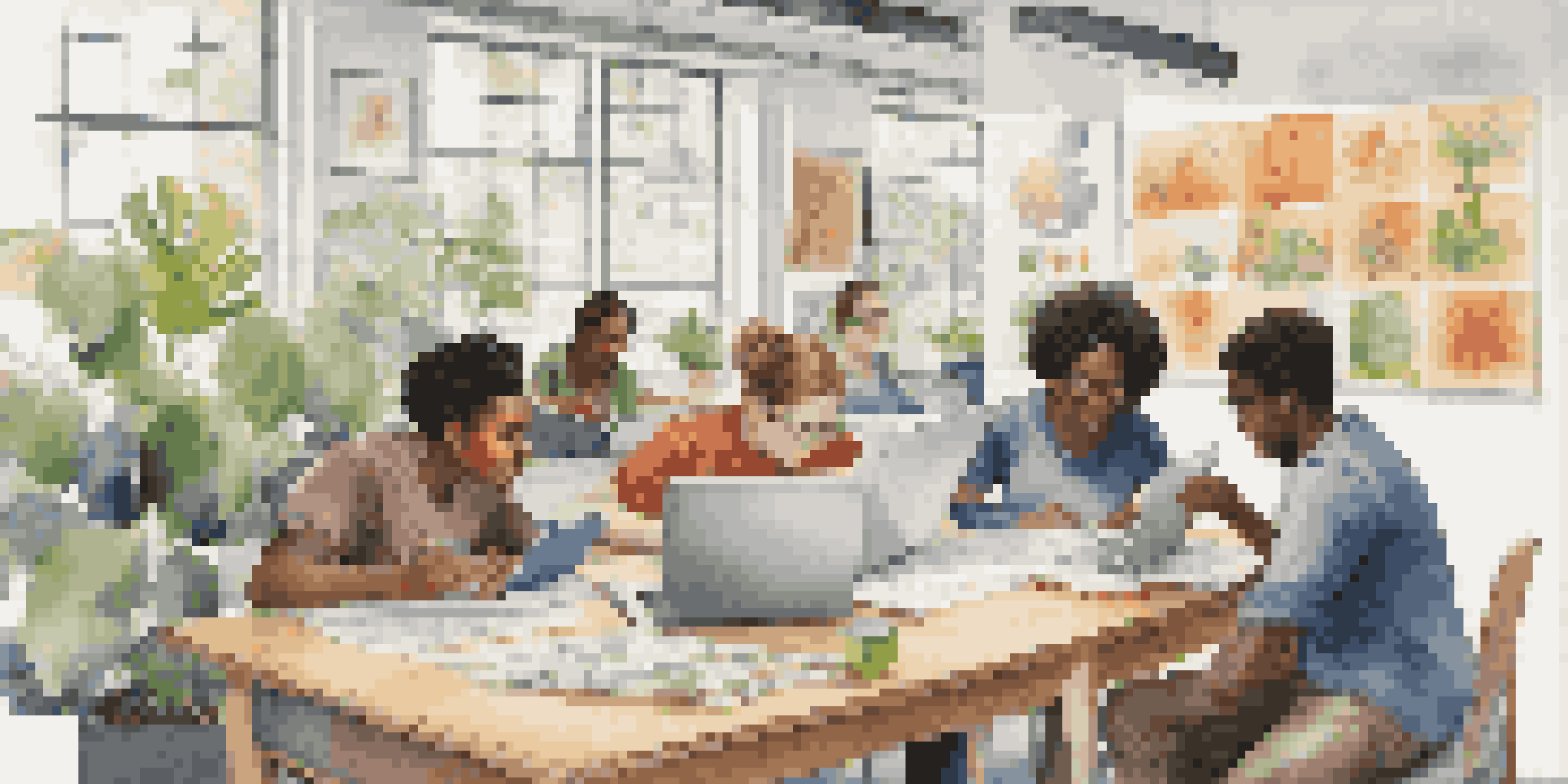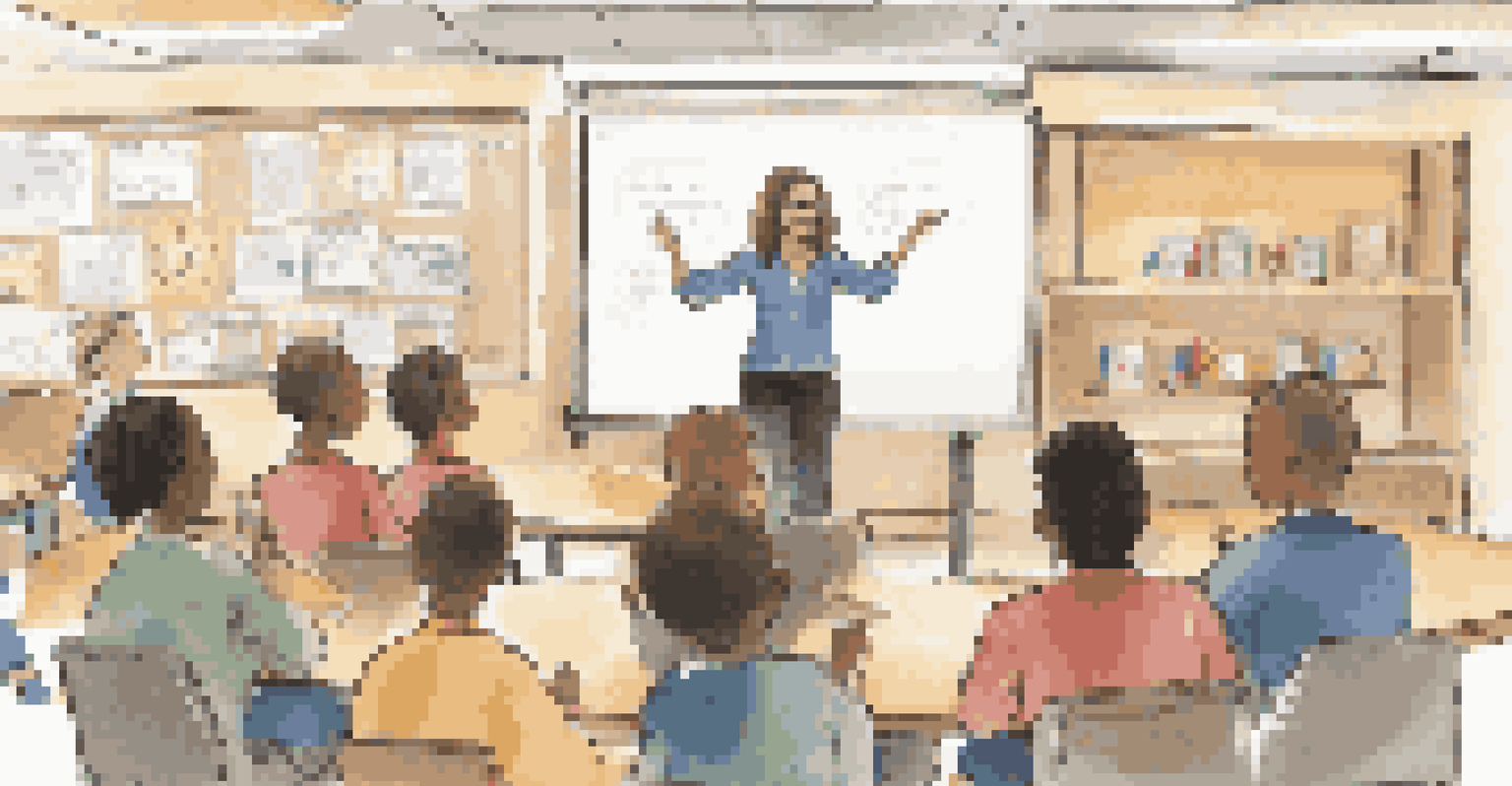Developing Critical Thinking Through Authentic Projects

Understanding Critical Thinking and Its Importance
Critical thinking is the ability to analyze information, evaluate evidence, and construct reasoned arguments. It’s essential in today's fast-paced world where we are bombarded with data and opinions. By honing critical thinking skills, individuals become better problem solvers and decision-makers in both their personal and professional lives.
The mind is not a vessel to be filled, but a fire to be kindled.
For example, in a workplace setting, a critical thinker can assess a situation, weigh pros and cons, and propose a balanced solution. This skill is not just valuable for employees; it’s also crucial for leaders who must navigate complex challenges. Thus, fostering critical thinking is a priority for educators and employers alike.
Authentic projects provide a practical avenue to develop these skills because they require students or participants to engage with real-world issues. Through these projects, learners can apply their critical thinking abilities in a meaningful context, making the learning experience all the more impactful.
What Are Authentic Projects?
Authentic projects are activities that involve real-world problems and challenges, allowing learners to apply their knowledge in practical ways. These projects often mimic the tasks professionals face, bridging the gap between theory and practice. By working on issues that matter, learners are more likely to stay engaged and invested in their work.

For instance, a project could involve creating a marketing campaign for a local business, where students must conduct research, analyze data, and present their findings. This type of project not only enriches learning but also provides students with tangible skills that are applicable in the workforce. Authentic projects encourage collaboration, creativity, and critical thinking all at once.
Critical Thinking Boosts Problem-Solving
Developing critical thinking skills enhances individuals' abilities to analyze situations and make informed decisions in personal and professional contexts.
Moreover, they offer opportunities for reflection and feedback, which are essential for developing critical thinking. As learners navigate through challenges, they learn to question assumptions, consider multiple perspectives, and refine their ideas based on constructive criticism.
Linking Projects to Real-World Issues
One of the most effective ways to develop critical thinking is by linking projects to current real-world issues. When learners see the relevance of their work, they become more motivated to think critically about the subject matter. This connection to reality not only enhances engagement but also fosters a deeper understanding of complex problems.
Critical thinking is the key to a successful future. It helps us navigate the complexities of life and make informed decisions.
For instance, a project addressing climate change could involve researching local environmental impacts and proposing actionable solutions. This not only teaches students about the science behind climate change but also prompts them to think critically about societal responsibilities and potential outcomes. It’s a powerful combination of knowledge and action.
Additionally, when students engage with real-world issues, they learn to appreciate diverse viewpoints and the multifaceted nature of problems. This experience equips them with the tools to analyze situations from various angles, a vital component of critical thinking.
The Role of Collaboration in Critical Thinking
Collaboration plays a crucial role in developing critical thinking skills through authentic projects. When learners work together, they are exposed to different perspectives and ideas that challenge their own thinking. This interaction fosters an environment where questioning and dialogue are encouraged, essential components of critical thinking.
For example, group projects require students to share their insights, debate solutions, and negotiate roles. This process not only helps them refine their own ideas but also teaches them how to articulate their thoughts clearly and listen to others respectfully. In this way, collaboration becomes a vehicle for deeper understanding and critical analysis.
Authentic Projects Engage Learners
By linking education to real-world issues, authentic projects motivate students to apply their knowledge practically, fostering deeper engagement and critical analysis.
Moreover, working in teams mirrors real-life scenarios where collaboration is often necessary to solve complex problems. By experiencing this firsthand, learners develop not just critical thinking skills but also interpersonal skills that are vital in any career.
Encouraging Reflection and Metacognition
Reflection is a key element in developing critical thinking because it encourages learners to consider their own thought processes. When students take time to reflect on their work and the outcomes of their projects, they gain insights into their strengths and areas for improvement. This metacognitive practice is essential for becoming a self-directed learner.
For instance, after completing a project, students might journal about what strategies worked, what didn’t, and how their thinking evolved throughout the process. This practice not only reinforces learning but also helps students to internalize their experiences, making them more effective critical thinkers in the future.
Additionally, incorporating opportunities for peer feedback can further enhance reflection. When learners receive constructive criticism from their peers, they are prompted to reassess their ideas and approaches, leading to deeper analysis and growth.
Assessing Critical Thinking in Authentic Projects
Assessing critical thinking can be challenging, especially in the context of authentic projects. Traditional assessments often fail to capture the complexity of critical thinking skills. Instead, educators can use alternative methods, such as rubrics that focus on specific skills like analysis, evaluation, and synthesis of information.
For example, a rubric could assess how well students identified key issues, explored different perspectives, and justified their conclusions in a project. This approach allows for a more nuanced understanding of each learner’s critical thinking abilities and provides valuable feedback for improvement.
Collaboration Enhances Critical Skills
Working in teams exposes learners to diverse perspectives, which strengthens their critical thinking abilities and prepares them for real-life problem-solving.
Furthermore, including self-assessment components can empower students to take ownership of their learning. By reflecting on their own critical thinking processes and outcomes, students can develop a clearer understanding of their progression and areas for further development.
Implementing Authentic Projects in Education
To effectively implement authentic projects in education, educators must foster a supportive environment that encourages exploration and experimentation. This means providing students with the necessary resources, guidance, and encouragement to tackle real-world problems. Teachers can start small, integrating authentic projects into existing curricula to gradually build students' confidence and skills.
Additionally, collaboration with community organizations or businesses can enhance the authenticity of the projects. By partnering with local entities, students can work on challenges that have a direct impact on their community, making their learning experience even more relevant and engaging.

Ultimately, the goal is to create a culture of inquiry where students feel empowered to ask questions, take risks, and think critically. With the right support and structure, authentic projects can transform the educational landscape, equipping learners with the critical thinking skills they need to thrive in a complex world.